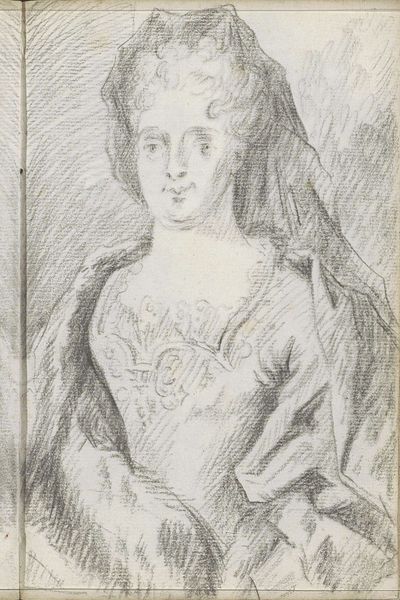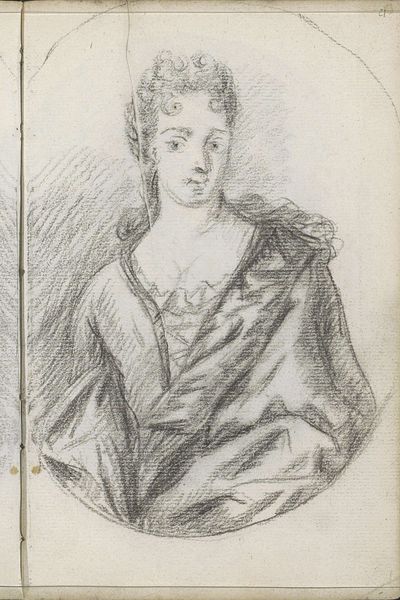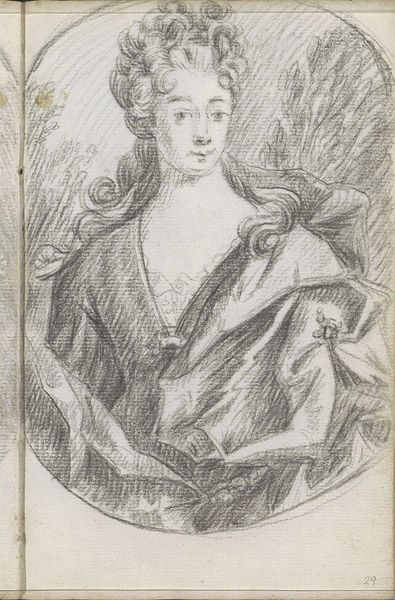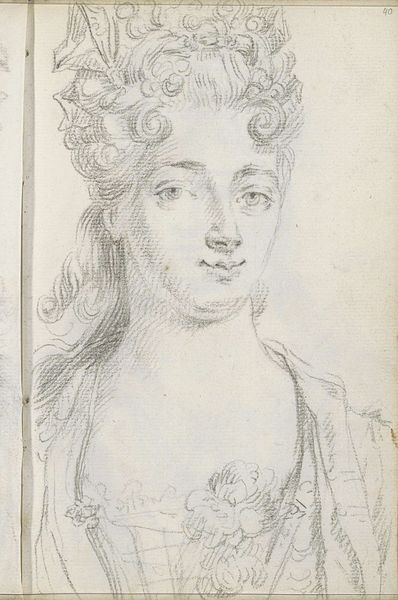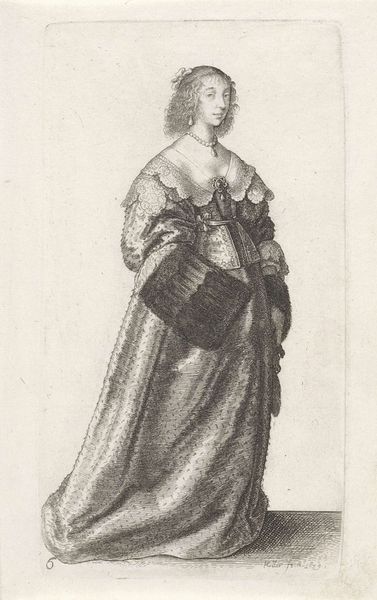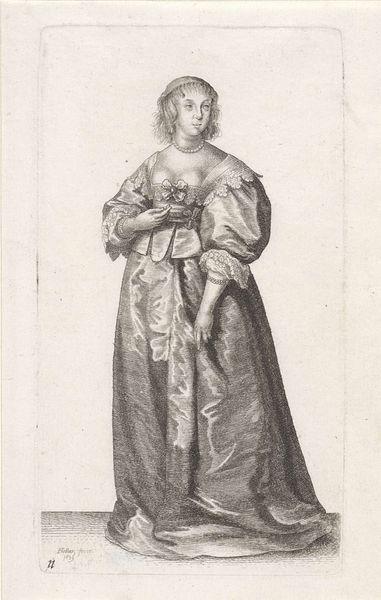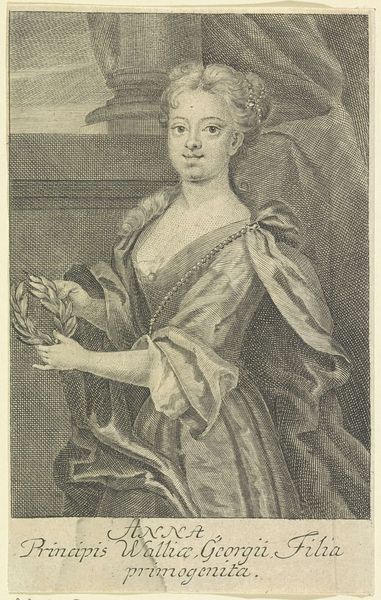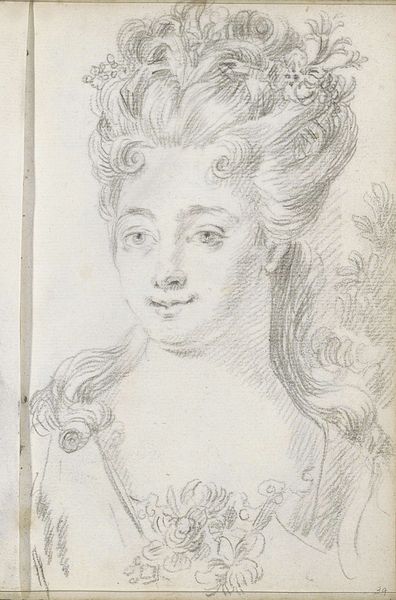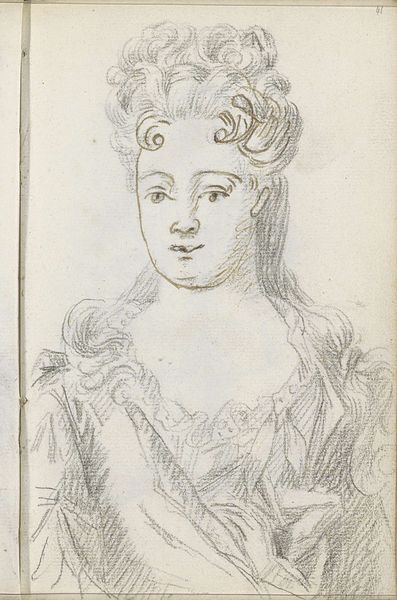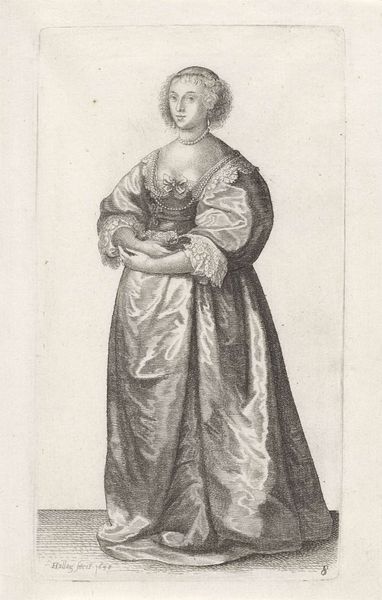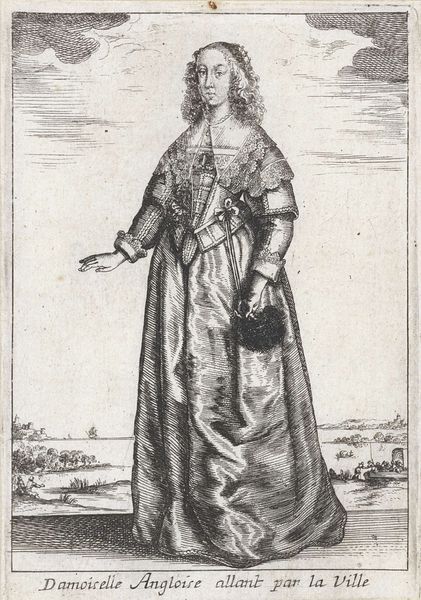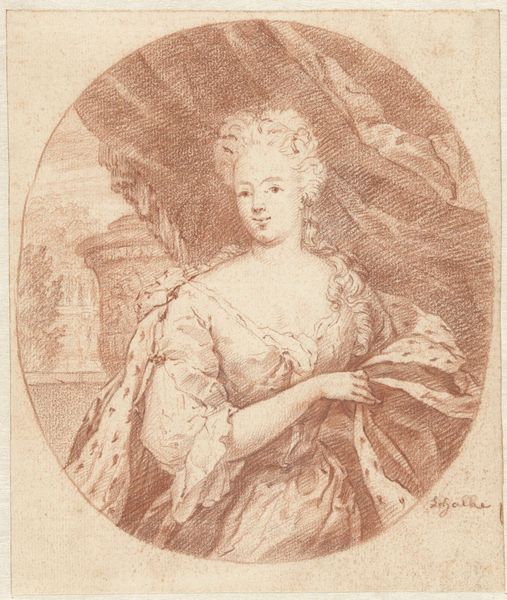
drawing, paper, pencil
#
portrait
#
drawing
#
amateur sketch
#
light pencil work
#
pen sketch
#
pencil sketch
#
paper
#
personal sketchbook
#
ink drawing experimentation
#
pen-ink sketch
#
pencil
#
pen work
#
sketchbook drawing
#
pencil work
#
rococo
Copyright: Rijks Museum: Open Domain
Petrus Johannes van Reysschoot’s sketch portrays a woman adorned in the elaborate fashion of her time. The coiffure, the fabric draped around her, and the decorative flourishes on her dress, all speak to a specific moment in history when personal presentation was an art form. The elaborate hairstyle, a towering edifice of curls and adornments, echoes the power of the elite. This symbol of status and wealth, reminiscent of royal portraiture, appears across various periods, from ancient Egyptian headdresses to Marie Antoinette's extravagant wigs. These exaggerated forms are not merely aesthetic choices but potent symbols that reflect the wearer's place in society. The fabric itself, carefully draped and folded, speaks to the art of textile and its ability to communicate wealth, status, and refined taste. These persistent motifs, whether in the folds of a Roman toga or a Renaissance gown, tap into a collective memory. A memory where garments serve as potent signifiers of identity, power, and belonging. The cyclical nature of fashion and symbolism ensures these motifs continually resurface, evolving and taking on new meanings across different epochs.
Comments
No comments
Be the first to comment and join the conversation on the ultimate creative platform.
